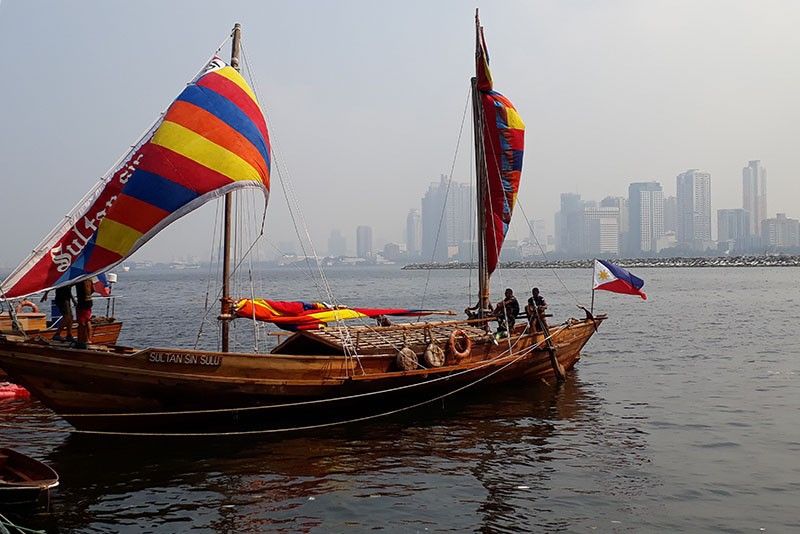Balangay team journeys to China

MANILA, Philippines — “The sea never divided us, it unified us as a people,” said the head of the Voyage of the Balangay, the Philippine team that sailed around Southeast Asia using the balangay, the ancient Filipino ship.
Art Valdez issued the statement during the send-off ceremony at the Manila Yacht Club yesterday.
The ceremony was attended by former president Fidel Ramos, Agusan del Norte Rep. Lawrence Fortun and the officials of the Manila Yacht Club, Philippine Coast Guard and Grupo Agatep.
Valdez was referring to the seas of Java, Celebes, Sulu and South China as well as the Gulf of Thailand.
Although he pushed through with the maritime journey, Valdez was aware of the “issues with China.”
He said the Philippines and China had a thousand-year relationship long before this kind of problem cropped up.
Both countries currently maintain strong positions on their claims in the South China Sea, with China displaying its massive military power in the area.
He said the consulate general of the Philippines in Xiamen and the Philippine embassy in Beijing had been ensuring a safe journey for the Voyage of the Balangay.
He admitted that it required a lot of paperwork before his trip could push through.
Valdez said the balangay was the means of transportation and communication during ancient times, and the Philippines was able to engage in trade and prospered before the colonizers arrived on its shores.
“We would like to maintain and renew our relationship with the Middle Kingdom – which is China – and the rest of Southeast Asia,” Valdez said, explaining the goal of his team’s third attempt to sail to China.
The Voyage of the Balangay team was supposed to sail to China last year to commemorate the 600th anniversary of an expedition led by Sultan Paduka Batara, the ruler of Sulu in 1417.
Batara and his people wanted to engage in trade with China’s Ming Dynasty.
The voyage, composed of three replicas of the balangay – Sultan sin Sulu, Lahi ng Maharlika and Sama Tawi-Tawi – is expected to reach Xiamen on May 3.
It left Manila at noon yesterday and was expected to dock at Poro Point in La Union today.
It will sail across the South China Sea, which Valdez described as “600 nautical miles of open water,” until they reach Xiamen on May 2 or 3.
“Climate change made a really big difference,” Valdez said.
Team member Ted Esguerra, who also serves as the voyage physician, ensured that the balangays complied with all scientific requirement.
“We have a medic onboard, communications using satellite phones and these boats are good on weather,” Esguerra said.
Made mostly of hardwood such as lauan and mahogany, the Lahi ng Maharlika and the Sama Tawi-Tawi are powered by motor engines.
The Sultan sin Sulu has no engine and will depend on large paddles.
Aside from the usual boat tools, the Sultan sin Sulu was loaded with a week’s supply of food – mostly fruits, vegetables, canned goods and eggs. It also has a gas stove, some utensils and blankets and pillows.
With the help of some private individuals and groups, the team sailed from Tawi-Tawi to Brunei, Indonesia, Singapore, Thailand, Cambodia and Vietnam for 17 months from 2009 to 2011.
Upon arrival in China, the team will visit Sultan Paduka Batara’s tomb in Dezhou in Shantong province, pay respects to the Rizal monument in the same city and pay courtesy calls on officials of the Philippine embassy in Beijing.
- Latest
- Trending






























